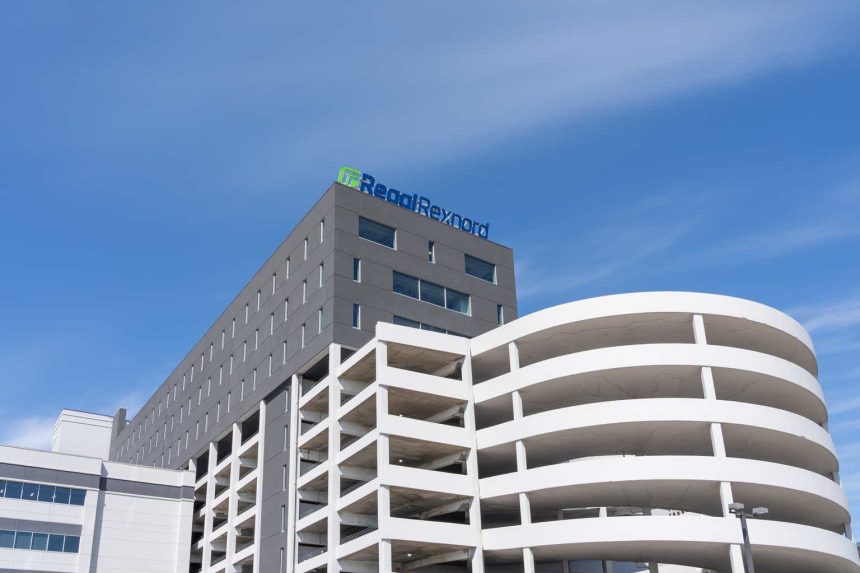In the fall of last year, I called shares of Regal Rexnord (NYSE:RRX) appealing, but uncertain at the same time. The company has been seeing tougher times as of recent, with organic sales declines weighing on profitability here, limiting the potential to deleverage.
All this makes that leverage remains a bit higher for longer, something which makes me a bit uneasy, certainly as industrial end markets are softening as it appears in recent weeks.
I continue to hold a wait-and-see approach despite the sound positioning and softer earnings multiple, as leverage remains my concern here.
Solutions To Power, Transmit And Control Motion
Regal Rexnord aims to create a better tomorrow by offering sustainable solutions which power, transmit and control motion. A $6.2 billion business, which employs some 30,000 workers, is comprised out of three segments, the largest of which is the power transmission business which makes up over 40% of sales, catering industrial, food & beverage and energy clients.
The remaining two divisions each make up nearly 30% of sales, being the automation segment as well as the motor & air moving segment. These segments cater a wide range of industries including factory automation, food & beverage, aerospace, medical, industrial, HVAC and other commercial applications.
Being a wide-diversified business in terms of segments and end markets, Regal relies heavily on North America, where it generates some 70% of sales. This is complemented by 17% exposure to Europe, complemented by the rest of the world, including Asia-Pacific. The greater diversification between industry segments in particular has been achieved after a rather dramatic transformation strategy in recent years.
The company has come a long way in its transformation. Over the past five years the company grew sales by 75% to $6.3 billion, but moreover the company grew EBITDA margins by 7 points to 21% of sales, while becoming a better and more diversified business as well.
This transition has in large been the result of a $4.95 billion deal for Altra Industrial Motion, a transition announced late in 2022, with the deal closing in the first quarter of 2023. That deal made that leverage ratios ticked up to 4 times, but it brought a huge impetus to the business as well.
Trading at $122 in the fall, the 66 million shares granted Regal an $8 billion equity valuation and about $14 billion enterprise valuation. Leverage ratios were set to come down a big following a $400 million divestment of the Industrial Motors and Generator business, yet this is just a drop in the bucket.
A non-demanding valuation and better positioning made me more upbeat last fall at levels around the $120 mark, although on the downside is that the company took on quite some debt. Being mindful of these (leverage) risks, I was taking a wait-and-see-approach.
And Now?
Since October of last year, shares actually fell to a low of $100 during the dip in the autumn, with the moves exaggerated by leverage employed. What followed was a big recovery to a high in the $180 in March of this year, as a general pullback in industrial names made that shares have fallen to $138 per share.
In February, Regal Rexnord reported a 29% increase in full year sales to $6.25 billion, with much of the growth driven by the purchase of Altra, although that near 7% organic growth was pretty decent. The company posted GAAP operating earnings of $377 million, which was more than offset by a $431 million interest expense, largely the result of the Altra deal.
After no less than 9 adjustments, GAAP losses of $0.87 per share turned into an adjusted profit of $9.15 per share, actually down from $10.75 per share in 2022. Net debt of $5.75 billion was substantial at 4.1 times EBITDA.
The company provided a modest guidance for 2024, seeing adjusted earnings advancing to $9.75-$10.55 per share, actually still trailing the 2022 earnings numbers. This largely comes from additional synergies seen from the Altra deal, as the sale of the Industrial Motors and Generator business will cut net debt, and subsequently interest expenses, a bit as well.
On the final day of April, the company closed on this sale, although that net proceeds are seen at just $355 million, with net proceeds earmarked to repay expensive and variable debt.
Early in May, Regal Rexnord reported a 26% increase in sales to $1.55 billion as the Altra deal was still adding significantly to reported sales growth, having closed less than 12 months ago. The issue was that organic sales were down 7%, with the business hurt by slower industrial activity at large, something seen by many peers in the sector as well.
The company squeezed out GAAP earnings of $0.30 per share, as adjusted earnings of $2.00 per share were down twenty-two cents on the year before. Amidst the softer start to the year, the company cut the midpoint of the adjusted earnings to $10.00 per share, down fifteen cents.
Net debt ticked down to $5.72 billion following minimal cash flow generation, with leverage ratios stable at 4.1 times, as the latest divestment only goes a small way in reducing leverage ratios.
Investor Takeaway
The truth is that I am somewhat cautious on Rexnord here. In the fall, I saw earnings power around $10 per share for 2023, but following a weaker end to the year, the earnings performance fell short. In fact, earnings are only seen at $10 per share this year, if all goes well, with momentum now clearly being negative. Much of this is attributed to much lower HVAC sales, notably heating solutions.
The issue is not so much the short-term earnings power, as adjusted earnings multiples are quite modest at 13-14 times, yet the issue is that of high leverage, as in all likelihood the latest divestment brings leverage only down to 4.0 times EBITDA. While all this is not too comforting, the company did report a 1.1 times book-to-bill ratio for the first quarter, and while April orders were down 2%, they trended better than the first quarter orders at large.
Weighing it altogether, I am upbeat on the business in the long haul, but cautious for now. Shares have been range bound since 2021, and frankly the softer performance is a bit concerning given the leverage employed. For now, I will be keen to keep a close eye on the business, looking for more deleveraging attempts during the year, while keeping a close eye on the organic growth performance.
Over time, the company likely deserves a market multiple or even a premium, yet I want to get more confident in the transition and deleveraging attempts, in a rather though operating environment, making that I am still taking a wait-and-see-approach. This comes as I expect some wobbles along the way.
Read the full article here



